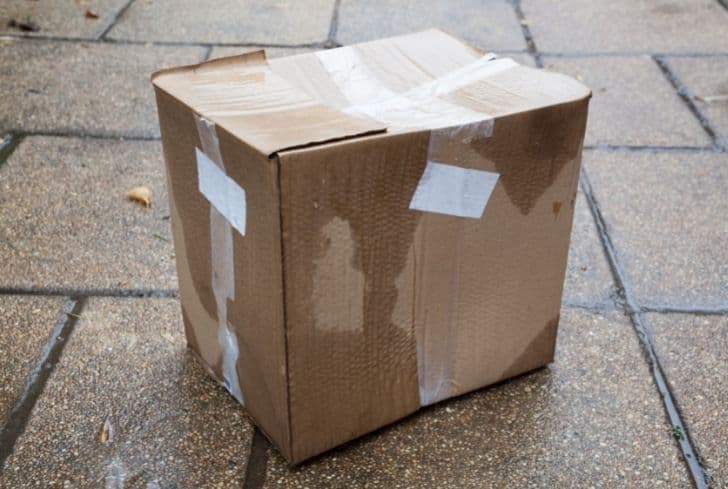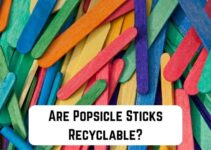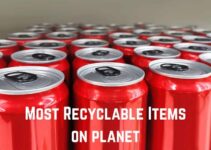Paper is an item everyone owns. We have different forms of paper for various purposes. We use tissue paper for personal care, repro paper for printing, newsprint for printing newspapers, paperboard for wrapping, fine art paper for art and craft, and other paper types.
Cardboard is also a type of paper, and it is mainly used to make cardboard boxes. You might have a couple of cardboard boxes lying around in your home, and you are thinking of how to dispose of them properly. Another thought coming to your mind is if they are recyclable.
Wetting a paper is something everyone wants to avoid. No one wants to have to think of ways to dispose of wet paper. Although it is inevitable, if you have children around, they will play with paper and dip it in water. So, what do you do when you have some wet cardboard in your home?
A person with concerns about the current state of the environment will think of creative and safe ways of disposing of wet cardboard. Are you one of the people interested in reducing our impact on the environment? Or are you not worried that our environment is deteriorating? Either way, this blog post will cause you to rethink.
Can Wet Cardboard Be Recycled?
All types of paper can be recycled. They are one of the items that can be recycled easily. Cardboards can easily be put in the recycling bin, taken to the recycling center, and used to produce other paper products. However, if the cardboard is wet, can it still be recycled? This is the question people ask.
Wet cardboard cannot be recycled. Most recycling facilities use an automated sorting machine to separate and sort out the paper from other waste materials. When wet cardboard is placed into the sorting machine, it clogs it up, and the facility has to spend a lot of money clearing it out.
A surprising fact is that it does not take a large amount of wet cardboard to clog the machine. A small piece of wet cardboard can shut down the sorting machine for a long time. And if the sorting machine is shut down, the recycling facility cannot function at full capacity. When waste cannot be recycled, the landfills get filled up.
When items are being recycled, they are first separated based on how heavy they are. As items are moved down the recycling line, they are automatically shaken upon a conveyor belt, and lighter items like cards and paper are separated from other materials.
When wet cardboard is placed in the recycling line, it does not separate because it has absorbed water and is now heavier. So, it ends up in the wrong waste pile. Cardboard is supposed to be with other paper waste, but wet cardboard will be with other recyclable materials because the machine separates them by their weight, not material quality.
Another thing that makes wet cardboard difficult to recycle is the changes in the fiber content. So, it is very difficult for machines to break them down. Although, during the recycling process of paper, water is added. But, when the paper is wet already and more water is added to it, the fiber contents are manipulated, and it becomes worthless.
If you want to recycle wet cardboard, the first thing is to let it dry out. The time it will take for the cardboard to be completely dry is dependent on the thickness of the cardboard. Under no circumstance should you take wet cardboard to recycling facilities to be recycled.
Can You Recycle Cardboard With Tape on It?
You know how excited you are when you know your delivery is close by, and you cannot wait to unbox it and enjoy the item inside. Whether you bought it or it is a gift, you open the box with the same eagerness. But now, you have an issue, how do you dispose of the box? The item inside is all you need, and you have it.
People have asked if you can recycle cardboard with tape on it. The answer is no; cardboard with tape on it is not recyclable. While the cardboard is recyclable, the tape on it is not recyclable, regardless of the type of tape on the cardboard, painter tape, scotch tape, duct tape, or masking tape. They are not recyclable.
Cardboards with tapes can be taken to the recycling facility for recycling. But, the tapes are first removed from the cardboard before the process of recycling begins. You do not want to give the recycling center a difficult job because removing tapes from cardboard can be tedious.
So, before you take cardboard to the recycling tape, try to remove all the labels and tapes on the box first. Tapes and labels contain chemicals that make them sticky, and these chemicals can affect the recycling process of cardboard. Remember, only materials made from natural and organic products can be recycled.
Tapes affect the recycle value of cardboard; leaving them on the cardboard for a long time will result in the value of the recycled cardboard depreciating. And no recycling facility wants to exert resources and time recycling materials that would not be useful to the public.
Can You Recycle Cardboard With Oil On It?
You order a box of pizza for lunch, you have a great meal, but you are stuck with empty cardboard boxes with oil and grease. How do you dispose of it? Can the cardboard be recycled with oil on it? These are some of the questions you would ask if you hope to reduce your impact on the environment.
Cardboard with oil on it cannot be recycled. Oil, cheese, grease, and other food materials affect paper fibers, making them difficult to recycle. During the pulping process, the paper fibers will not be separated because of the oil. This is the reason it is advised to keep food items away from paper to be recycled.
Other items to be recycled go through a heat process to burn off all contaminants, but papers do not get heated during their recycling process. So oil, grease, and other food items are stuck with the pulp, ruining the whole paper batch to be recycled.
After the cardboard has been sorted into types and grades, it is moved to the paper mill, and it can be there for a long time. The food items stuck on the cardboard can attract rodents and insects. When these animals locate the soiled cardboard, they eat them and end up eating the unsoiled ones as well. And the whole batch of cardboard is ruined.
The cardboard is washed with soapy water and chemicals to remove contaminants like staples, inks, glue, and plastic films. Washing cardboard soiled with oil and grease can be difficult; you know how much effort is required to wash an item full of oil in addition to the amount of soap and water needed.
After the paper has been washed, it is taken to a receptacle, where it is mixed with water to create a slurry. Cardboard with oil often poses a problem in the slurry because the remaining oil floats to the top, and it isn’t easy to separate the oil from the paper fibers. When the oil floats to the top, other cardboards in the slurry become contaminated, and the entire batch becomes ruined.
Can Wet Cardboard Be Composted?
Another alternative to recycling unwanted and old items is to compost them. The items are taken to the compost site, where they are broken down and become fertilizer or compost that nourishes the soil. Microorganisms break compostable items down into compost.
Cardboard can be composted. When the cardboard is wet, the composting process is faster. When microorganisms break down cardboard, it adds carbon to the soil, thereby enriching it. So, if you have some wet cardboard and do not know how to dispose of them, compost them.
Before you compost wet cardboard, ensure you tear them into smaller pieces. It is easier for bacteria to break them down when they are in shredded form than when they are whole and large. Also, it is easier to mix shredded cardboard with greens in the compost bin, making it easier to compost.
Ensure you mix the shredded wet cardboard with high-carbon materials, like dead leaves, hay, and straw, as well as high-nitrogen materials like fruit peels, vegetables, manure, and fresh grass clippings. These materials will speed up the composting process of the cardboard.
How Can You Dispose of Wet Cardboard?
Recycling and composting are some of the ways we can dispose of old and unwanted items without causing any damage to the environment. But, do you know that there are fun and creative ways to dispose of these items? We will look at some of the ways you can dispose of wet cardboard.
1. Children Playhouses
There are many toys and games to keep children occupied in this technological age, but most of these do not challenge their creativity and innovative skills. A simple cardboard box can be used to create a miniature house with windows and doors. This will ignite a new form of creative play. But before you start constructing the playhouse, ensure the cardboard is dried out.
With some cuts and glues, you can construct working doors, windows, a roof, and other house necessities. Your kids have the chance to paint it with the colors of their choice. This is a good way to keep them occupied in rainy, hot, or cold weather.
2. Storage Boxes
Many people spend a lot of money purchasing boxes when they could create a DIY storage box at home from old and wet cardboard. Wet cardboard that has been dried is often stronger and more durable than normal cardboard. The paper fibers have been reassembled during the drying process.
With a penknife and glue, you can create storage boxes from cardboard. The beauty of creating your storage box is you can design it the way you like. You are not looking for a pre-designed box. You have the choice of colors, texture, and designs.
3. Mulch
Wet cardboard is perfect for mulch. You can use it to block the growth of weeds on flowerbeds and insulate plants during the cold weather. Get large pieces of cardboard, lay them on the soil and weeds, overlap the edges to prevent the sun from shining through. The cardboard blocks the weeds from receiving sunlight, thereby impeding their growth.
You can also cut out pieces of the cardboard and place them around plants and shrubs. It insulates them and keeps the cold out during winter. Another thing you can do is to cover the wet cardboard with some mulch, leaf litter, or wood chips. With time, the wet cardboards will decompose and enrich the soil.
4. Plant Pots
Wet cardboard that you dried out is perfect for plant pots. You can also use wet cardboard, but it must be wrapped with dry cardboard and a plastic bag. To create a plant plot, reinforce the corners and bottom of the cardboard box with duct tape, fold and tape the flaps down.
Then line up the cardboard with a plastic bag. You can decorate it if you wish. Before you plant anything in the box, ensure you make some holes in the bottom for drainage.
Conclusion
Recycling is the best thing man has come up with to protect our environment, and everybody must take part. We cannot have few people making efforts to recycle old and unwanted items, and others do not care about the damages caused to the environment.
Many people have to be enlightened, so recycling can be the popular way of disposing of waste items. Having wet cardboard in your home can cause concern, especially if you do not know how to dispose of it properly. Don’t worry; we have several tips on how to upcycle wet cardboards. Use them and have a thrilling experience.
References:
https://canyouthrowitaway.com/can-you-recycle-wet-cardboard/
https://www.netzerocompany.com/blogs/news/should-we-remove-the-tape-before-recycling-cardboard-boxes
https://www.gardeningknowhow.com/composting/ingredients/composting-cardboard.htm
https://earth911.com/inspire/6-ways-to-upcycle-cardboard-boxes/
https://lifestyle.howstuffworks.com/crafts/recycled/10-ways-to-reuse-cardboard.htm






